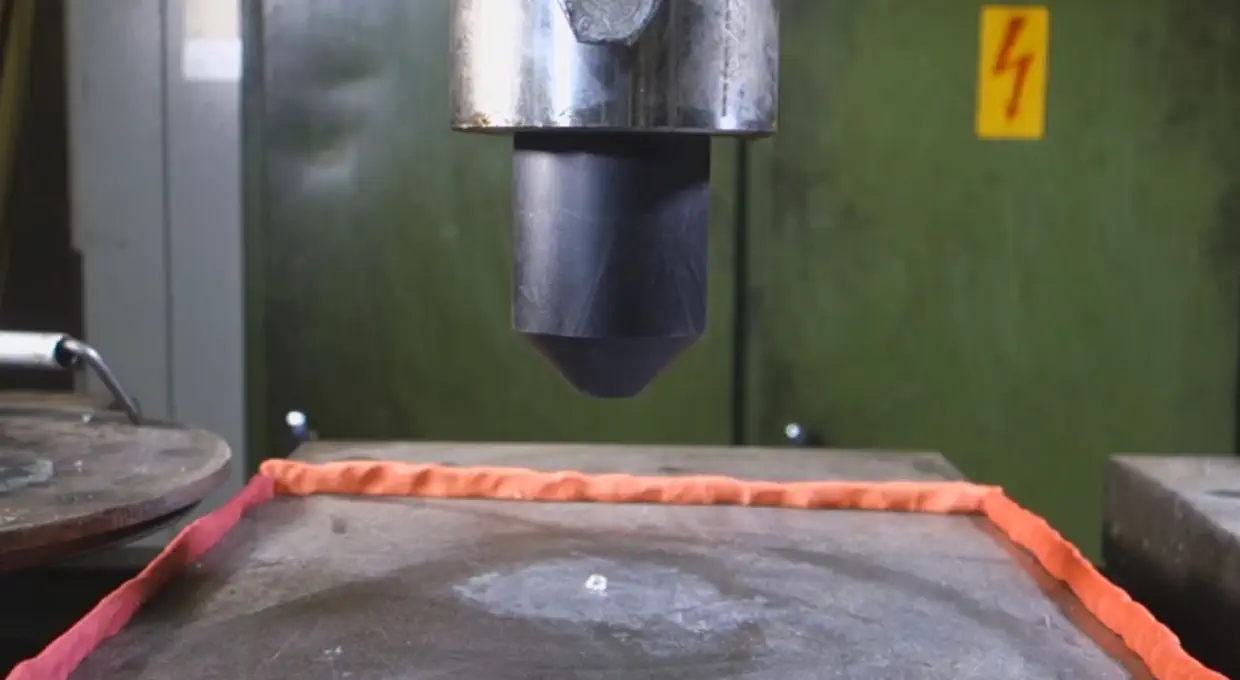Diamonds are forever, so putting a diamond under a hydraulic press should be no issue then, should it? After all, diamonds are formed under immense pressures beneath the earths surface. Watch the video below and find out what happens next…

Diamonds are forever, so putting a diamond under a hydraulic press should be no issue then, should it? After all, diamonds are formed under immense pressures beneath the earths surface. Watch the video below and find out what happens next…
The “hardness” that diamonds are known for only really refers to their ability to be scratch-resistant, according to the mohs scale of mineral hardness. Diamonds have the highest rating of 10 out of 10. Scientists have even discovered synthetic materials that are actually harder than diamonds, such as wurtzite boron nitride and lonsdaleite. While the co-valent bonds between the diamond atoms themselves are extremely strong, diamonds can also be very brittle, especially heavily included diamonds or poorly formed ones.
Diamond have a unique crystalline nature and have what is known as directional hardness. In the direction of its grain, these crystals can split along smooth planes, if given a sharp soft blow with a knife edged object. Just as wood splits effortlessly along its grain. In the direction opposite to the grain, a diamond is almost impossible to break. This property was used by the early diamond cutters and is still used today to shape a diamond before polishing. This splintering of diamonds is not dependent on the presence of inclusions or internal fissures in the crystal.
Hence the often heard caution to not drop a diamond on a hard surface as it could chip or worse still split along its grain lines. This occurs very very rarely so there is no reason to be alarmed but for Heaven's sake handle your diamond as you would a baby - gently and with care.
See Also: Our Complete Guide to Natural Diamonds
In the case of this video, the diamond in question is an I3 clarity, the lowest possible clarity grade given by the GIA. The heavy internal inclusions weaken the diamond structure making it break much faster than a flawless diamond would have, thus adding to the drama and excitement of the implosion. In real life situations, a diamond would rarely come under such intense pressure except in a controlled lab environment. Regardless, a flawless ‘perfectly’ cut diamond would have still succumbed to the extreme pressure of this hydraulic press. Albeit taken marginally longer!
A diamonds prestige and physical properties remain wholly intact even after this experiment.

Digital Creator | Founder of @pprxteam | @northeastern & @startupInst Alumni | www.nikhathi.com.
Graduate from North Eastern University in Boston, this esports team owner is also an expert on certified diamonds. Trained at GIA, New York, Nikhil carries with him 5-years of experience in the diamond business and has a fresh, unconventional writing style that resonates with today's Gen Y and Z.
Unique industry insights into the world of diamonds, ring selection & design tips, plus the latest in jewellery trends & much more...
